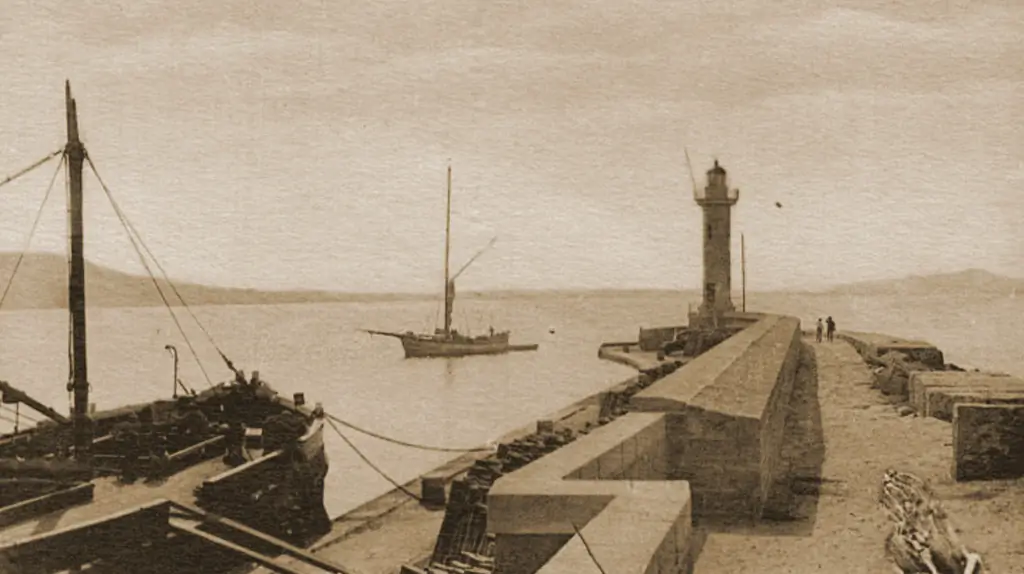The Môle Jean Réveille
Where Maritime History Comes to Life
Legends and Waves: The Saga of the Môle Jean Réveille in Saint-Tropez
The Môle Jean Réveille, a name that awakens the maritime soul of Saint-Tropez, a structure that spans time like a silent guardian of the waves. Let's delve into the history of this grand jetty, witness to an architectural and maritime adventure that gracefully unfolds in the azure waters.
History and Origins of the Môle Jean Réveille
In the cobblestone alleys of history, the first whispers of this iconic jetty emerge in the 15th century. Once known as the Môle du Portalet, its foundations were laid upon ancient rock formations. Like a stone sentinel, it gradually extended itself, interweaving past and present in an architectural ballet. In 1715, the saga intensified, spanning several decades until the heart of the 19th century. The Môle du Portalet extended westward between 1846 and 1868, transforming into the majestic Grande Jetée that the horizon beholds today.
Role and Function of the Môle Jean Réveille
Like a fortress set in the waves, this jetty sheltered cannons, ready to defend the city against maritime assaults. A battery at its tip stood firm against the sea, while in 1858, a fixed red light was erected on a cast-iron lamppost, guiding sailors in the darkness. In 1865, the very first Red Lighthouse of Saint-Tropez was built at the end of the Grande Jetée. A cylindrical masonry tower standing 15 meters tall, carrying within it the history and breath of sailors, artists, and the city itself.
Architecture and Design of the Môle Jean Réveille
The stones, timekeepers, recount the story of this jetty. An architectural fusion of defense and aesthetics, where limestone withstands the furious waves of the Mediterranean. The jetty was conceived as a protective sentinel, a blend of defense towers and lighthouse. Each stone tells a story, each curve an epic tale.
Evolution and Transformation Across the Centuries
The waves of history have sometimes struck head-on. In 1944, German troops erased the red lighthouse, but not the history it carried. The jetty, like a phoenix, resurfaced in 1945, rebuilt with determination. From 1952 to 1968, the lighthouse evolved, undergoing a metamorphosis in reinforced concrete that testifies to the evolution of modern times.
Cultural and Touristic Significance
The Grande Jetée is more than a defense structure. It's the soul of Saint-Tropez, the starting point of maritime legends. It attracts the curious, artists, travelers seeking authenticity. A cultural pillar, an icon that dances between sea and sky.
Anecdotes and Legends
Among the whispers of the sea, a legend persists. That of a miraculous storm that saved the jetty from an enemy attack. The waters raged, repelling enemy ships and preserving the city. A story written in the waves, a legend etched in the memory of Saint-Tropez.
Events and Festivities at the Môle Jean Réveille
The jetty, more than a structure, is a cultural stage. From exhibitions to musical performances, it is the heart of gatherings. A space where past and present intertwine in a lively dance.
Role in the Artistic Landscape

Artists' brushes have captured the soul of the jetty. Colors, textures, reflections, all blend into the canvas of art. The Môle Jean Réveille has inspired masterpieces, immortalizing its timeless charm.
Conservation and Preservation Challenges
Just as sailors navigate the seas, the jetty faces erosion and the elements. Conservation is a constant challenge. The hands of time, combined with human effort, preserve this stone treasure, a guardian of a millennia-old history.
Comparison with Other Coastal Structures
In the vast expanse of the world's coastline, the Grande Jetée is a unique star. Its combination of defense function, lighthouse, and cultural icon sets it apart. It's a maritime masterpiece, weaving a connection between the past and the future.
The grand jetty of the port of Saint-Tropez, renamed Môle Jean Réveille, is more than a structure of stone. It's a story that resonates in every wave, a symphony of past and present that dances with time. Every stone, every angle, every ray of light tells a chapter of maritime history, a story that continues to be written over the years.






